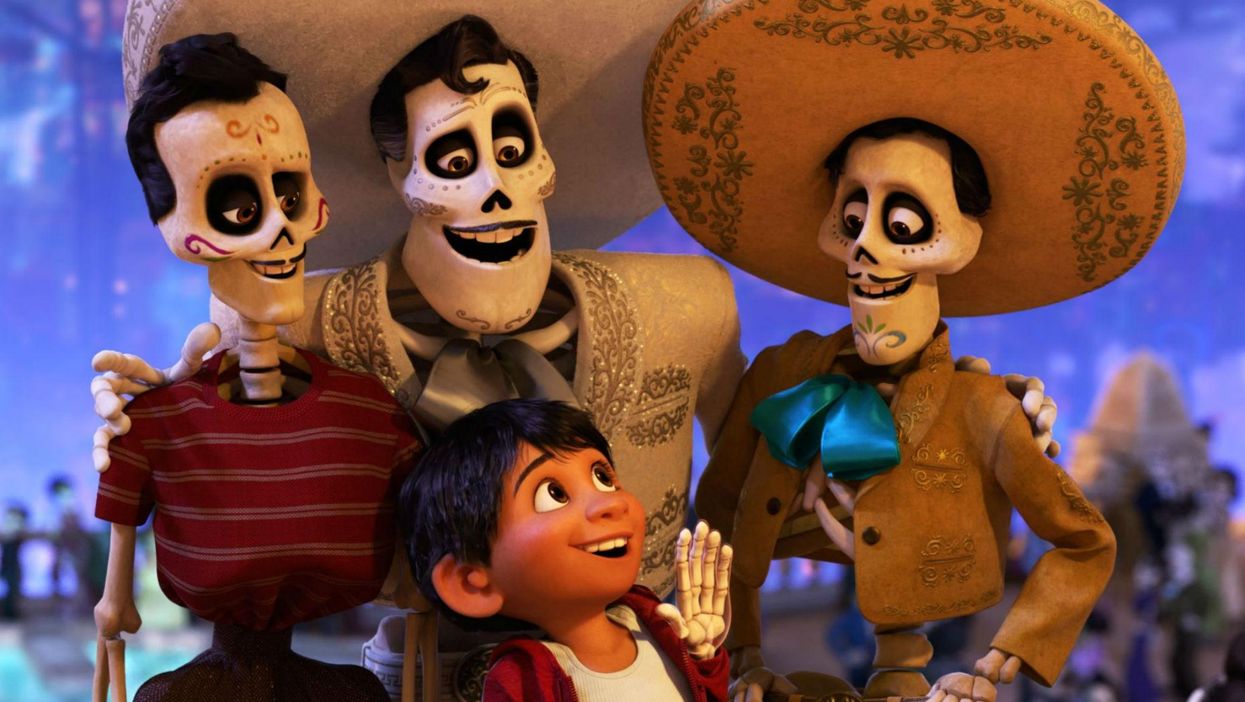Daisy Maldonado
Nov 04, 2021

Pixar’s ‘Coco’
(YouTube/Disney)
Pixar’s Coco might have hit theaters in 2017 but four years later, people are sharing their takes on how the film approached one major aspect: border control.
“I will forever be mad that the creators of Coco decided to include a document checkpoint between the world of the dead and the world of the living,” wrote Twitter user @Grecia_Writer.
For those who haven’t seen the film, Coco follows the emotional and heart-warming story of a 12 year old boy named Miguel in the fictional town of Santa Cecilia. Miguel secretly has dreams of being a musician but his family has a deep rooted disapproval of the lifestyle. This is because of his great great grandmother, Mamá Imelda, who banned music from their home after her partner abandoned her and their child, Mamá Coco, to be a musician.
When Miguel steals the guitar of Ernesto de la Cruz, a musician he idolizes and believes to be his deceased great great grandfather, he is transported to the afterlife and comes face to face with his dead family members. His deceased family has the ability to return him to the land of the living, and agrees to do so on the condition he never plays music again.
I will forever be mad that the creators of Coco decided to include a document checkpoint between the world of the d… https://t.co/ZOpyfs1sx7— Grecia (@Grecia) 1635869781
Instead of surrendering his dream, Miguel seeks help from a local named Hector. Viewers are first introduced to this character as he is trying to sneak into the land of the living by disguising himself as Frida Kahlo—which is how we are introduced to the allegorical ‘border control’ to hop between the land of the living and the land of the dead.
The film uses a physical border similar to the US-Mexico border to separate the dead from the living. The only people that are allowed to cross every year are those who have their photos placed on the altars of their living family members in remembrance during the Day of the Dead. If there is no photo of them on an altar, they’re rejected from entering.
The animated border patrol agents in the film also use facial recognition technology to determine who is cleared to cross over not unlike the process customs utilizes for those coming into the United States.
The movie was highly acclaimed for it’s stunning portrayal of Mexican culture.
In a quote tweet that’s garnered 2.6K retweets one user added: “borders existing in this afterlife too is such a spit in the face ... like y'all's imaginations are still so limited and carceral ?”
borders existing in this afterlife too is such a spit in the face ... like y'all's imaginations are still so limite… https://t.co/SIprcOn4Ut— in(evita)ble (@in(evita)ble) 1635909587
Another tweet read, “The one reason this flew over all our heads is because its normal for us.”
The one reason this flew over all our heads is because its normal for us. https://t.co/reSxXeYqAY— Homer//Homero 🇲🇽 💭 (@Homer//Homero 🇲🇽 💭) 1635990879
The comments section has since filled up with people’s mixed reactions. Some are in awe of the underlying message that flew over their head while others have defended the beloved Pixar film.
“Literally the whole point of the checkpoint is that these borders are unfair and ridiculous. People are so caught up with getting offended about any little thing that they can’t see when they’re fighting with someone who is on the same side as them,” wrote @killerkyana.
Literally the whole point of the checkpoint is that these borders are unfair and ridiculous. People are so caught u… https://t.co/YdUYjxN6tJ— Kyana (@Kyana) 1635988275
Sign up to our new free Indy100 weekly newsletter
Top 100
The Conversation (0)













